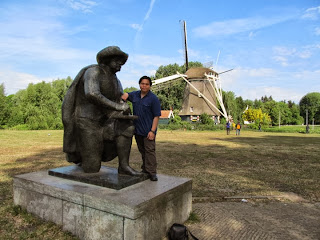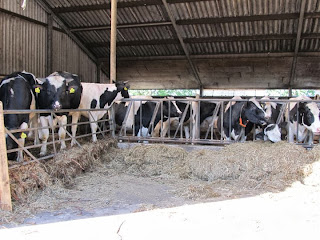 The Netherlands has often been referred to as just "Holland", even though Holland, North and South, is just two of the twelve provinces that consist The Netherlands. Referring to The Netherlands as Holland is pretty common so it is usually accepted but it does not bode well to the other Dutch population in the other ten provinces with no "Holland" in its name for obvious reason.
The Netherlands has often been referred to as just "Holland", even though Holland, North and South, is just two of the twelve provinces that consist The Netherlands. Referring to The Netherlands as Holland is pretty common so it is usually accepted but it does not bode well to the other Dutch population in the other ten provinces with no "Holland" in its name for obvious reason. Speaking of Holland, there is no other thing more synonymous to Holland than windmills. They are pretty much inseparable. The Dutch needed windmills to keep water off their land. Most of their land is below sea level, thus the name Nether-land.
Speaking of Holland, there is no other thing more synonymous to Holland than windmills. They are pretty much inseparable. The Dutch needed windmills to keep water off their land. Most of their land is below sea level, thus the name Nether-land.One of the most famous windmill in Amsterdam is Riekermolen. It is popular mainly because of its location. Most tourists wants to see a windmill up-close when they are in Amsterdam and the Riekermolen is one of the nearest in the city. It also has other attractions nearby making it a favorite destination for tours offered by travel agencies.
 Near the Riekermolen is Rembrandt Monument. To the right is a picture we took with it and the Riekermolen Windmill in the background. Our tour guide said that for some reason, there was a rumor that spread out the Rembrandt himself used to live in the Riekermolen. He said that this has been a wrong belief and probably was just wrongly assumed by tourists and locals alike because of the Rembrandt Monument being built next to the Riekermolen.
Near the Riekermolen is Rembrandt Monument. To the right is a picture we took with it and the Riekermolen Windmill in the background. Our tour guide said that for some reason, there was a rumor that spread out the Rembrandt himself used to live in the Riekermolen. He said that this has been a wrong belief and probably was just wrongly assumed by tourists and locals alike because of the Rembrandt Monument being built next to the Riekermolen. The Dutch are really proud of Rembrandt and it is evident with the number of landmarks and attractions with his name attached to it. Our tour guide, unsurprisingly, kept calling him too as the greatest painter even. With Rembrandt's popularity, the Riekermolen Windmill itself has also been called as Rembrandt's Mill at times.
The Dutch are really proud of Rembrandt and it is evident with the number of landmarks and attractions with his name attached to it. Our tour guide, unsurprisingly, kept calling him too as the greatest painter even. With Rembrandt's popularity, the Riekermolen Windmill itself has also been called as Rembrandt's Mill at times. About a half-mile from Riekermolen and Rembrandt Monument is Rembrandt Hoeve. It is a local cheese farm and clog factory. It is a nice stop and a great addition to a cultural tour of Amsterdam. In Rembrandt Hoeve, we got the chance to watch and see how cheese and clogs are made.
About a half-mile from Riekermolen and Rembrandt Monument is Rembrandt Hoeve. It is a local cheese farm and clog factory. It is a nice stop and a great addition to a cultural tour of Amsterdam. In Rembrandt Hoeve, we got the chance to watch and see how cheese and clogs are made. The first stop is is the room where they make fresh cheese. They explain well how they make the different flavors on the cheese and how they mature. They also pass around different cheese wheels to let you feel how the softness and hardness of the cheese vary as they mature. Best part is you get a taste of freshly made cheese. In the next room, you get to witness a clog, more popularly known as wooden shoe, being made from scratch, and by scratch we mean a block of wood. The final stop is obvious their shop and a chance to sample more of their cheeses. Around the area is their huge farm and the barn where they keep their cows.
The first stop is is the room where they make fresh cheese. They explain well how they make the different flavors on the cheese and how they mature. They also pass around different cheese wheels to let you feel how the softness and hardness of the cheese vary as they mature. Best part is you get a taste of freshly made cheese. In the next room, you get to witness a clog, more popularly known as wooden shoe, being made from scratch, and by scratch we mean a block of wood. The final stop is obvious their shop and a chance to sample more of their cheeses. Around the area is their huge farm and the barn where they keep their cows.
